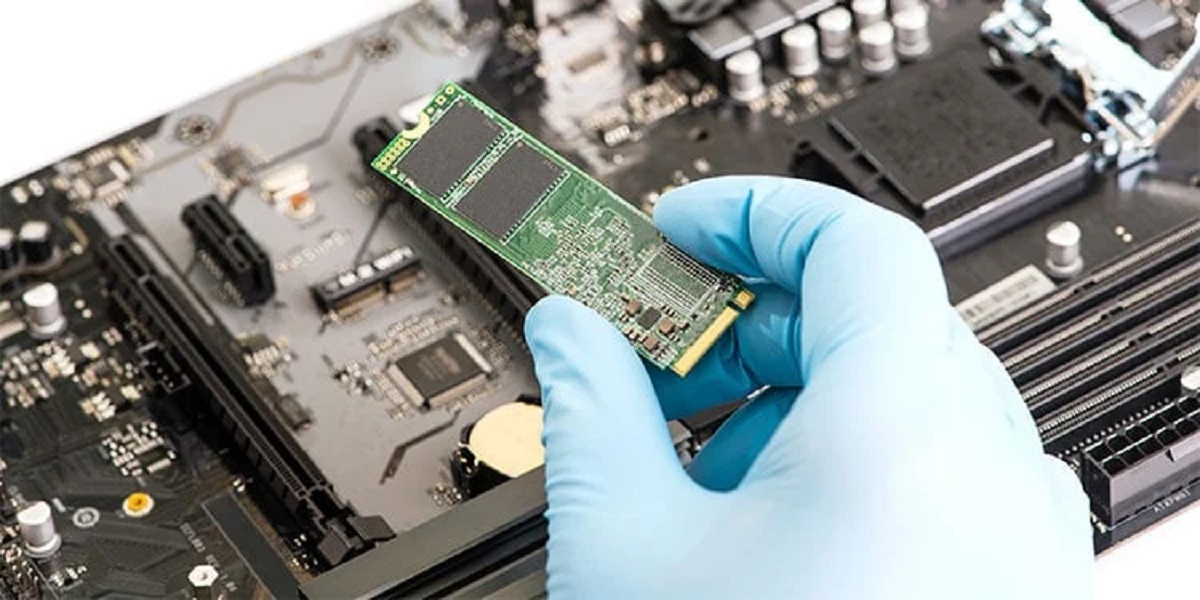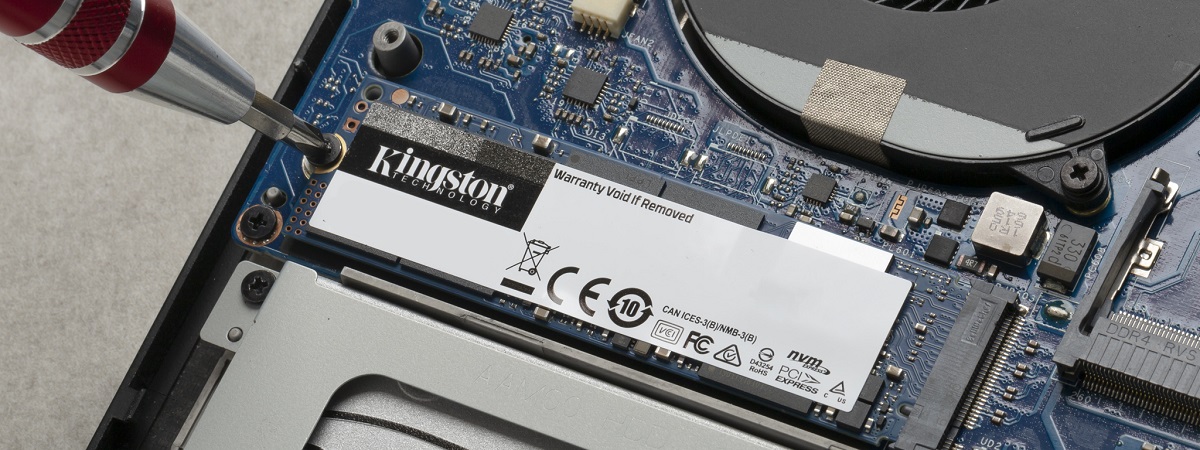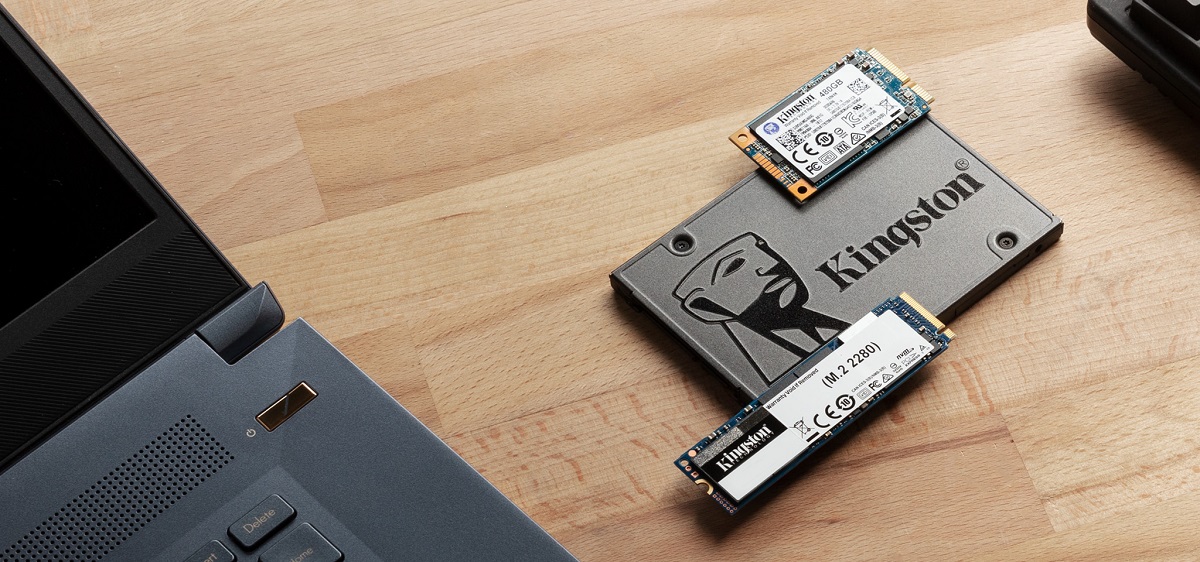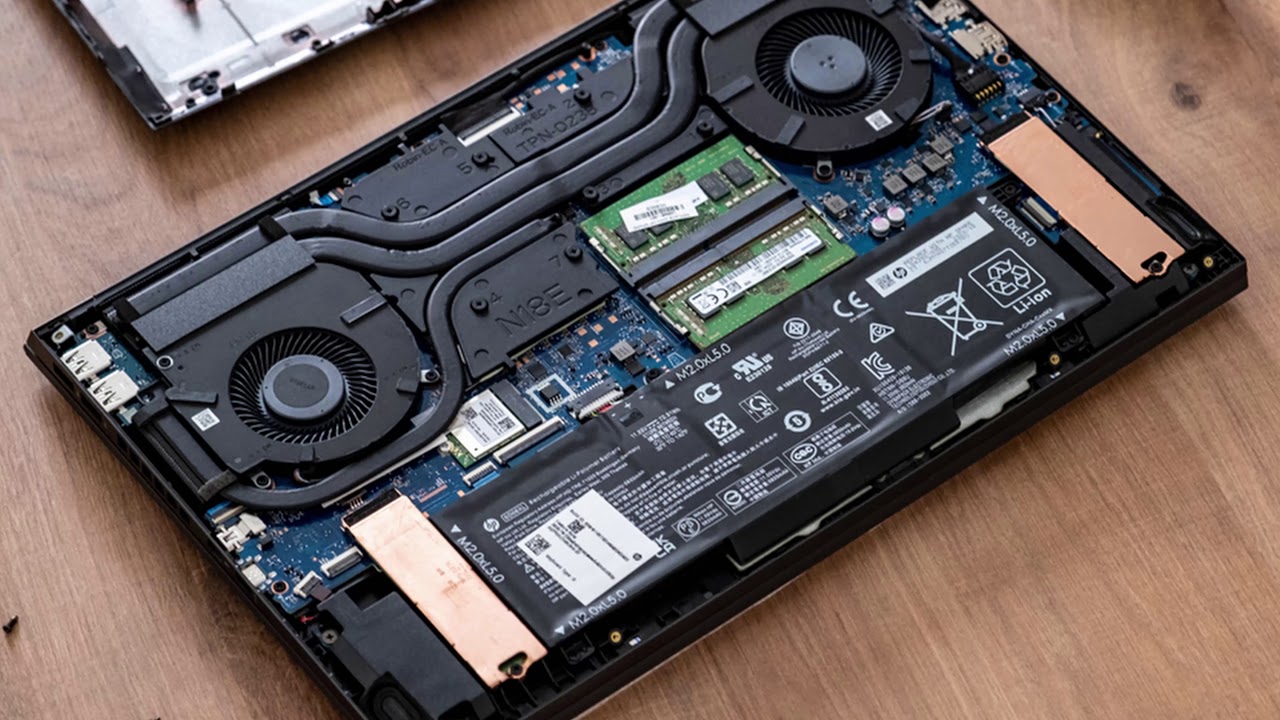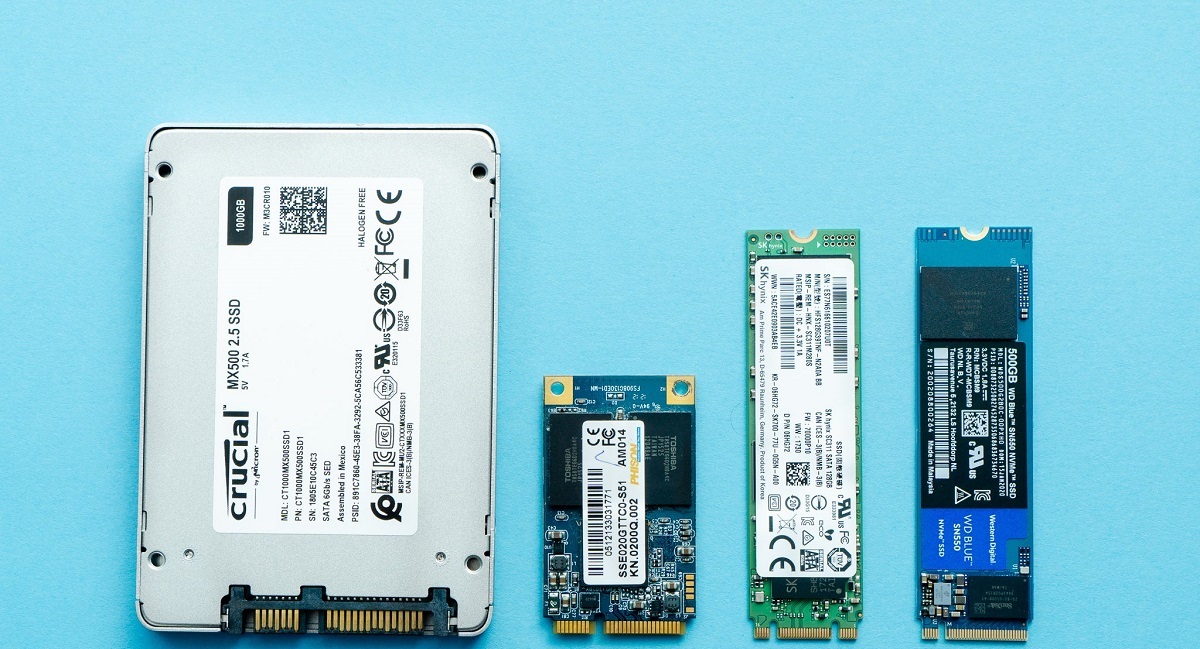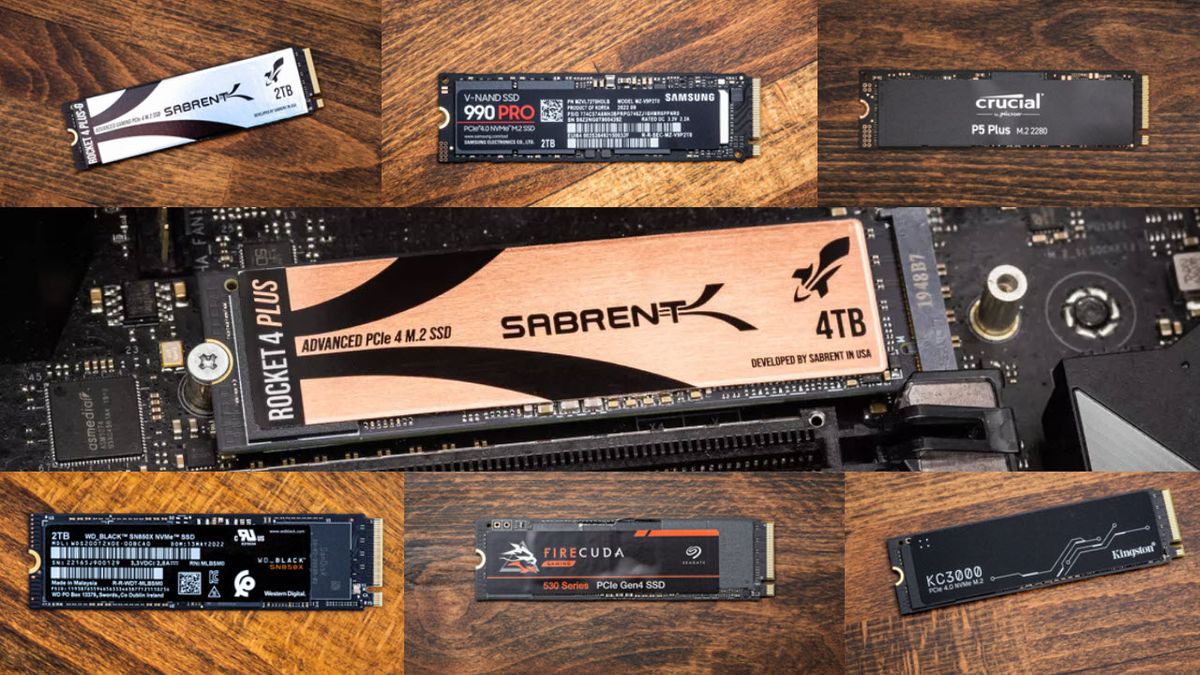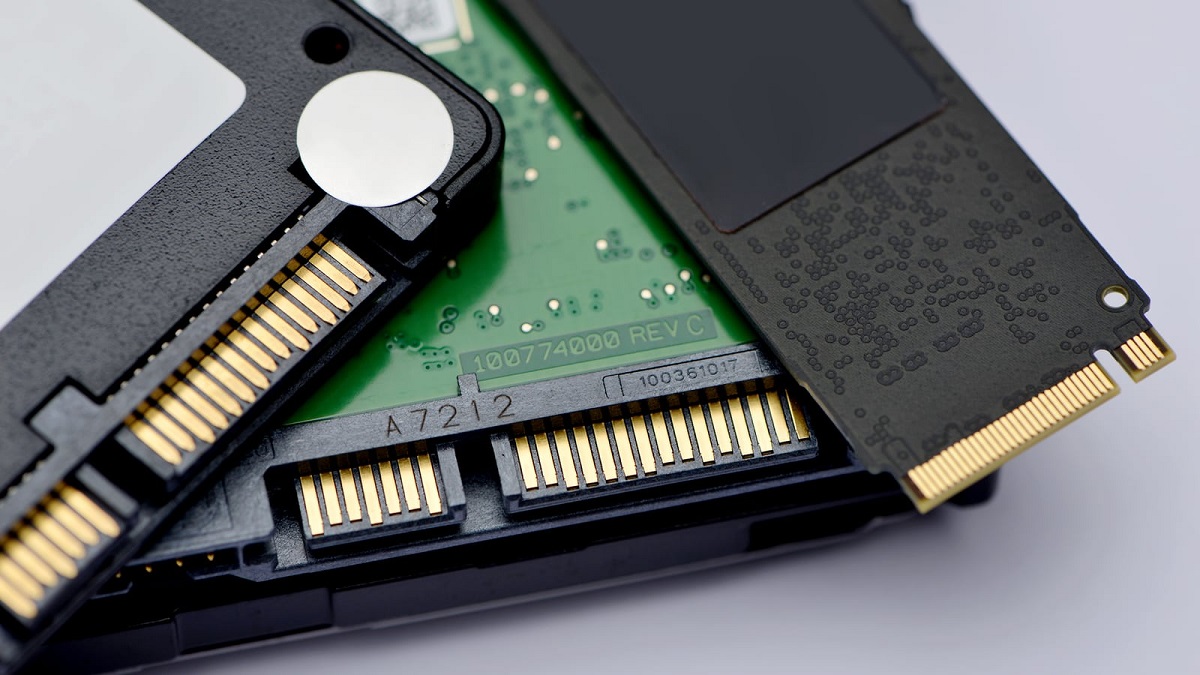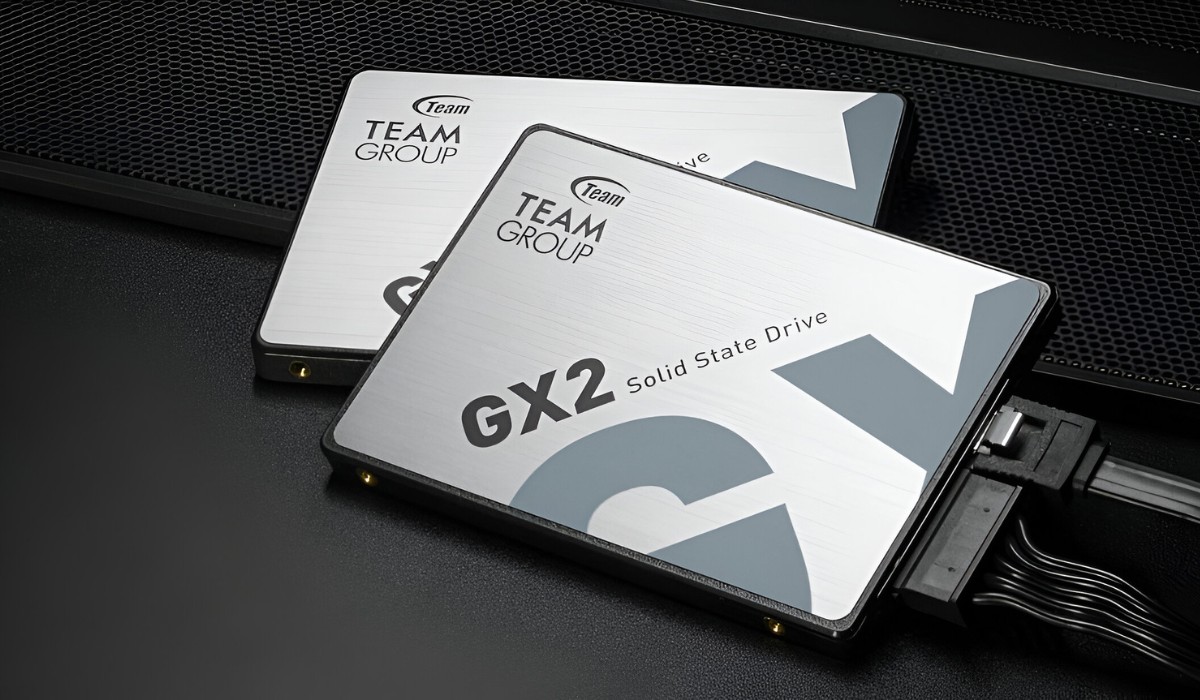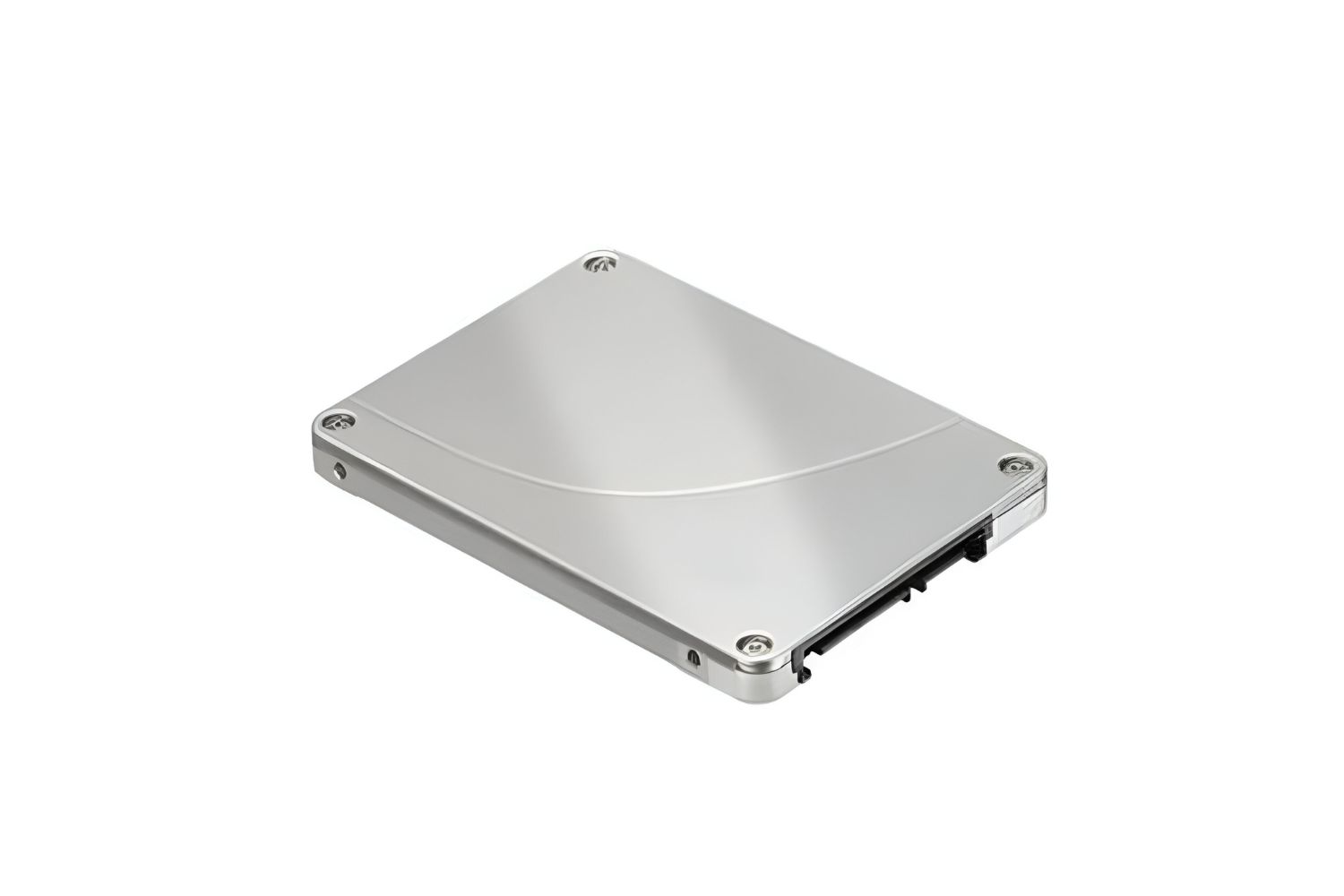Introduction
Welcome to the world of Internal SSDs – the next evolution in storage technology. If you are unfamiliar with what an Internal SSD is and how it can benefit your computer, you have come to the right place. In this article, we will explore the ins and outs of Internal SSDs, from their basic definition to their advantages over traditional hard drives.
The world of technology is constantly evolving, and as a result, storage requirements for computers have also changed. Gone are the days when traditional hard drives were the only option available. With the introduction of Internal SSDs, users now have access to faster and more reliable storage solutions.
An Internal SSD, short for Solid-State Drive, is a type of storage device that uses flash memory to store and retrieve data. Unlike traditional hard drives, which rely on spinning disks and mechanical parts, Internal SSDs are entirely electronic, making them more efficient and durable.
Internal SSDs work by using integrated circuits to store data. When you save a file or install a program, the data is stored in these circuits as electrical charges. This allows for much faster access times and data transfer rates compared to traditional hard drives.
One of the key advantages of Internal SSDs over traditional hard drives is their speed. With read and write speeds that are significantly faster, your computer will experience faster boot times, quicker application launches, and overall snappier performance. This can greatly enhance your productivity and gaming experience.
Another advantage of Internal SSDs is their durability. Since there are no moving parts, Internal SSDs are less susceptible to physical damage caused by shock or vibration. This makes them ideal for laptops and other portable devices that may be subject to rough handling.
Additionally, Internal SSDs are quieter and generate less heat compared to traditional hard drives. This can contribute to a quieter computing environment and better thermal management.
In the next sections, we will explore the different types of Internal SSDs, how to choose the right one for your needs, and how to install and care for them. So, let’s dive deeper into the world of Internal SSDs and discover how they can revolutionize your computing experience.
What is an Internal SSD?
An Internal SSD, short for Solid-State Drive, is a storage device that utilizes flash memory technology to store and retrieve data. Unlike traditional hard drives, which have spinning disks and mechanical components, Internal SSDs rely on integrated circuits to perform data storage and access functions.
Internal SSDs are designed to be installed inside a computer system, typically connected to a motherboard via a SATA or NVMe interface. They come in various form factors, including 2.5-inch drives, M.2 SSDs, and PCIe SSDs, to accommodate different computer configurations.
The key component of an Internal SSD is the NAND flash memory. This non-volatile memory technology stores data in a solid-state format, allowing for faster data transfer speeds, increased reliability, and lower power consumption compared to traditional hard drives.
Internal SSDs offer several advantages over traditional hard drives. One of the most significant benefits is their faster read and write speeds. With no mechanical parts to delay the data retrieval process, Internal SSDs provide quicker access to stored information, leading to improved system responsiveness.
Another advantage of Internal SSDs is their durability. Since there are no moving parts, they are more resistant to physical shock and vibration, reducing the risk of data loss due to accidental drops or impacts. This durability makes Internal SSDs particularly suitable for use in laptops or other portable devices.
Internal SSDs also have a lower operating temperature and generate less noise than traditional hard drives. This is because Internal SSDs do not require spinning disks and the associated motor, resulting in decreased heat output and a quieter computing environment.
Furthermore, Internal SSDs consume less power than traditional hard drives. This energy efficiency translates to longer battery life for laptops and lower power bills for desktop computers.
In summary, an Internal SSD is a solid-state storage device that offers faster performance, increased durability, lower power consumption, and a quieter computing experience compared to traditional hard drives. With these advantages, Internal SSDs have become the preferred choice for many computer users who demand high-speed and reliable storage solutions.
How does an Internal SSD work?
Internal SSDs function using an entirely different technology compared to traditional hard drives. Instead of relying on spinning disks and magnetic storage, Internal SSDs utilize flash memory to store and retrieve data.
The key component of an Internal SSD is the NAND flash memory. NAND, which stands for “NOT AND,” is a type of non-volatile memory. Non-volatile means that it retains stored data even when the power is turned off. This makes NAND flash memory ideal for long-term data storage.
Inside an Internal SSD, you will find multiple NAND flash memory chips. Each chip is composed of memory cells that can store electrical charges. These cells are organized into pages, which are further grouped into blocks.
When data is written to an Internal SSD, it goes through a process called programming. In this process, the SSD controller sends electrical charges to the specific memory cells, storing the data as a series of on or off states. To erase data from the SSD, a process called erasing is performed, where the charges are removed from the cells.
Unlike traditional hard drives, Internal SSDs do not rely on spinning disks and read/write heads to access data. Instead, data access in an SSD is performed electronically. When you request data, the SSD controller retrieves the data by searching for the stored electrical charges in the memory cells.
One of the main advantages of Internal SSDs is their ability to retrieve data much faster than traditional hard drives. Since there are no mechanical parts involved, the access time is significantly reduced. This results in faster boot times, quicker application launches, and overall snappier performance.
Another advantage is the absence of fragmentation issues. Fragmentation occurs when files are scattered across different sectors on a traditional hard drive, leading to slower access times. In an Internal SSD, data can be accessed in a non-sequential manner, eliminating the need for defragmentation and maintaining consistent performance.
Overall, Internal SSDs offer a faster and more efficient data storage solution compared to traditional hard drives. With their use of NAND flash memory and electronic data access, they provide improved performance, durability, and reliability for both personal and professional computing needs.
Advantages of Internal SSD over traditional hard drives
Internal SSDs offer several advantages over traditional hard drives, making them a superior choice for many computer users. Let’s explore some of the key benefits:
- Speed: One of the most noticeable advantages of Internal SSDs is their speed. With no moving parts involved in the data retrieval process, SSDs can access and transfer data at lightning-fast speeds. This results in quicker boot times, faster application launches, and overall snappier system performance. Tasks that used to take minutes now take seconds, enabling users to be more productive in their work or enjoy smooth gaming experiences.
- Reliability: As Internal SSDs do not have spinning disks or mechanical components, they are more resistant to physical damage caused by shock, vibration, or accidental drops. This improves the reliability of data storage and reduces the risk of data loss, ensuring that your important files and documents are better protected.
- Durability: Internal SSDs have a longer lifespan compared to traditional hard drives. With no mechanical parts to wear out or fail over time, SSDs are built to endure years of intensive use. This makes them particularly suitable for laptops or portable devices that may experience rough handling or movement.
- Energy Efficiency: Internal SSDs consume less power than traditional hard drives. As a result, they generate less heat and require less cooling, contributing to a cooler and quieter computing environment. The reduced power consumption also leads to longer battery life for laptops, making them ideal for use on-the-go.
- Noiseless Operation: Unlike traditional hard drives, which produce noise due to spinning disks and moving parts, Internal SSDs operate silently. This creates a more peaceful computing experience, especially for those who prefer a quiet working environment or enjoy watching movies or listening to music without the distracting hum of a hard drive.
- Portability: Internal SSDs come in various form factors, including slim M.2 SSDs, which can easily be installed in laptops, compact desktops, or even certain mobile devices. This portability allows for easy upgrading or transferring of data without the need for bulky external drives.
With these advantages, Internal SSDs have become the preferred choice for those who seek enhanced performance, reliability, and efficiency in their computing devices. Whether you are a professional who depends on fast data access or a casual user looking for improved system responsiveness, an Internal SSD can make a noticeable difference in your overall computing experience.
Types of Internal SSDs
Internal SSDs come in various types and form factors, each designed to cater to specific computer configurations and storage needs. Let’s take a closer look at some of the most common types of Internal SSDs:
- 2.5-inch SATA SSD: This is the most common type of Internal SSD. It follows the same form factor as traditional 2.5-inch hard drives, allowing for easy installation in laptops and desktops. 2.5-inch SATA SSDs are connected to the motherboard using a SATA cable and provide fast and reliable performance for everyday computing tasks.
- M.2 SSD: M.2 SSDs are smaller in size and use the M.2 form factor. They connect to the motherboard via the M.2 slot, which supports both SATA and PCIe interfaces. M.2 SSDs offer faster speeds and are often used in high-performance systems, such as gaming rigs or professional workstations.
- PCIe SSD: PCIe SSDs utilize the PCIe (Peripheral Component Interconnect Express) interface to deliver even higher performance compared to SATA-based SSDs. They connect directly to the PCIe slot on the motherboard, bypassing the limitations of SATA bandwidth. PCIe SSDs are commonly used in high-end desktops or servers that require maximum speed and efficiency.
- NVMe SSD: NVMe (Non-Volatile Memory Express) is a protocol specifically designed for SSDs. NVMe SSDs take advantage of the PCIe interface to deliver even faster data transfer speeds and lower latency. They provide exceptional performance and are well-suited for demanding workloads, such as 4K video editing or data-intensive applications.
- SAS SSD: SAS (Serial Attached SCSI) SSDs are primarily used in enterprise-level storage systems and servers. They offer enterprise-grade reliability, high endurance, and advanced features such as power loss protection and hardware encryption. SAS SSDs provide excellent performance and are designed to handle heavy workloads and demanding environments.
- Hybrid SSD: Hybrid SSDs combine the speed of an SSD with the storage capacity of a traditional hard drive. These drives have a small built-in SSD cache that stores frequently accessed data, allowing for faster read and write operations. Hybrid SSDs provide a balance between performance and affordability, making them a popular choice for budget-conscious users.
When choosing an Internal SSD, it’s essential to consider factors such as the available interface on your motherboard, storage capacity requirements, and budget constraints. Each type of Internal SSD has its own unique advantages, so weigh your needs against the performance and cost considerations to select the most suitable option.
Whether you need fast boot times, quick application launches, or high-speed data transfer, there is an Internal SSD type that can meet your specific requirements. Upgrade your computer’s storage with the right Internal SSD, and unlock a whole new level of performance and reliability.
How to choose the right Internal SSD for your needs
Choosing the right Internal SSD can greatly enhance your computer’s performance and storage capabilities. Here are some factors to consider when selecting an Internal SSD that best suits your needs:
- Storage Capacity: Determine how much storage space you require. Internal SSDs are available in various capacities, ranging from 128GB to several terabytes. Consider your needs for storing operating systems, applications, and files, both current and future, to ensure you have enough space to accommodate your requirements.
- Speed and Performance: Assess your performance needs. If you need fast data transfer speeds and rapid access to files, consider SSDs with higher read and write speeds. Look for SSDs that utilize faster interfaces, such as NVMe or PCIe, for improved performance compared to traditional SATA SSDs.
- Form Factor and Compatibility: Check the form factor and compatibility requirements of your computer system. Ensure that the Internal SSD you choose is compatible with your motherboard and fits the available slots. Common form factors include 2.5-inch SATA, M.2, and PCIe SSDs, so choose the one that matches your computer’s specifications.
- Budget: Determine your budget range. SSDs come at various price points, depending on factors such as capacity, speed, and brand. Consider your budgetary limitations and strike a balance between performance and cost to find a suitable SSD that meets your needs.
- Brand and Reliability: Look for reputable SSD brands known for their reliability and performance. Research customer reviews and ratings to gain insights into the reliability and durability of the SSDs you are considering. Opting for a trusted brand gives you peace of mind and ensures a higher chance of long-term satisfaction.
- Warranty: Check the warranty offered by the manufacturer. A longer warranty period indicates the manufacturer’s confidence in their product and provides you with added protection in case of any defects or issues. Look for SSDs with warranties that match your expectations and budget.
- Endurance and Write Longevity: Consider the endurance and write longevity of the SSD, especially if you will be performing frequent read and write operations or using the SSD for intensive workloads. Higher-end SSDs often have better endurance and can withstand more write cycles before showing signs of performance degradation.
By evaluating these factors and understanding your specific needs, you can make an informed decision when choosing the right Internal SSD for your system. Remember to strike a balance between storage capacity, performance, compatibility, and budget to find the perfect SSD that will enhance your overall computing experience.
Installing an Internal SSD in your computer
Upgrading your computer with an Internal SSD is a relatively straightforward process that can greatly improve its performance and storage capabilities. Here are the general steps to follow when installing an Internal SSD:
- Prepare: Before you begin, ensure that you have the necessary tools for the installation, such as a screwdriver. Also, make sure to power off your computer and unplug it from the power source to avoid any electrical hazards.
- Identify compatibility: Check the specifications of your computer and the SSD you have chosen to ensure compatibility. Verify the form factor and interface compatibility between the SSD and your motherboard.
- Open the case: Depending on your computer’s design, open the case or remove the access panel to gain access to the internal components. Refer to your computer’s manual or check online resources if you need guidance on how to open the case.
- Locate the storage bay: Identify the storage bay where the SSD will be installed. This is typically located near the existing hard drive or in a designated SSD slot.
- Remove existing drive (if applicable): If there is an existing storage drive occupying the bay where you want to install the SSD, you may need to remove it. Carefully disconnect any cables connected to the drive and unscrew any mounting brackets, then gently remove the old drive from the bay.
- Install the SSD: Align the connectors on the SSD with the corresponding interface on the motherboard. Gently insert the SSD into the bay, ensuring it is firmly seated. Use screws or mounting brackets (if included) to secure the SSD in place.
- Connect cables: If necessary, connect the data and power cables to the SSD. Refer to your motherboard’s manual for the correct connections. SATA SSDs use a SATA data cable and a power cable, while NVMe SSDs typically connect directly to the motherboard without the need for additional cables.
- Close the case: Once the SSD is properly installed and all cables are securely connected, close the computer case or reattach the access panel.
- Power on and configure: Power on your computer and enter the BIOS or UEFI settings to ensure that the SSD is recognized by your system. If necessary, adjust the boot order to prioritize the SSD as the primary boot drive.
- Initialize and format the SSD: Once your computer recognizes the SSD, you may need to initialize and format it to make it usable. This can be done through your operating system’s disk management utility.
Always refer to the specific instructions provided by the SSD manufacturer and your computer’s manual for any additional details or considerations during the installation process. If you are unsure or uncomfortable with installing the SSD yourself, it is recommended to seek assistance from a professional.
With the SSD successfully installed, you can now enjoy the benefits of faster boot times, improved application performance, and increased storage capacity. Prepare to experience a noticeable speed boost with your new Internal SSD!
Maintaining and caring for your Internal SSD
To ensure optimal performance and longevity of your Internal SSD, it is important to implement proper maintenance and care. Here are some tips to help you maintain and care for your Internal SSD:
- Keep your SSD firmware up to date: Regularly check for firmware updates from the manufacturer. Firmware updates often include bug fixes and performance enhancements that can improve the overall functioning of your SSD.
- Avoid excessive heat: Excessive heat can negatively impact the performance and lifespan of your SSD. Ensure that your computer has adequate cooling and ventilation. Avoid exposing your computer to direct sunlight or placing it in areas with limited airflow.
- Practice safe shutdowns and restarts: Avoid sudden power losses or system crashes while your SSD is in use. Use proper shutdown protocols and avoid forcefully powering off your computer. This will help prevent potential data corruption on your SSD.
- Enable TRIM: If you are using a Windows-based system, ensure that TRIM is enabled. TRIM is a feature that helps maintain optimal performance by allowing the SSD to quickly identify and erase unused data blocks.
- Avoid filling the SSD to capacity: It is advisable to leave some free space on your SSD. Avoid filling it to its maximum capacity, as this can impact its performance and longevity. Aim to keep at least 10-20% of the SSD’s total capacity free for optimal performance.
- Regularly back up your data: Although SSDs are generally reliable, it is crucial to regularly back up your data. This will protect your important files in case of any unforeseen failures or issues with your SSD.
- Avoid excessive write operations: While modern SSDs have improved endurance, excessive write operations can still affect their lifespan. Minimize unnecessary write operations by avoiding continuous, intensive tasks that involve frequent large file transfers.
- Perform periodic disk optimization: Depending on your operating system, it may provide disk optimization tools. These tools can help optimize the file system and improve overall SSD performance. Run these optimizations periodically to maintain optimal performance.
- Protect against malware and viruses: Install and regularly update a reliable antivirus program to protect your SSD and computer from potential malware or virus attacks. Malicious software can disrupt the functioning of your SSD and compromise your data.
- Handle with care during transportation or upgrades: When transporting your computer or performing upgrades, handle your computer and SSD with care. Avoid subjecting them to excessive shocks or vibrations, as these can potentially damage the SSD or cause data loss.
By following these guidelines, you can ensure the longevity and optimal performance of your Internal SSD. Regular maintenance and proper care will allow you to enjoy the benefits of faster access speeds, improved reliability, and increased storage efficiency for years to come.
Conclusion
Internal SSDs have revolutionized the way we store and access data in our computers. With their faster speeds, improved reliability, and greater durability compared to traditional hard drives, Internal SSDs offer a host of advantages that can greatly enhance your computing experience.
Throughout this article, we have explored the definition and workings of Internal SSDs, highlighting their key benefits over traditional hard drives. We discussed the various types of Internal SSDs available, helping you understand which one suits your needs and system configuration the best.
We also provided valuable insights into choosing the right Internal SSD for your specific requirements, considering factors such as storage capacity, speed, compatibility, budget, and reliability. Additionally, we discussed the installation process of Internal SSDs, guiding you through the steps to ensure a successful upgrade.
To maintain and care for your Internal SSD, we shared important tips such as keeping the firmware up to date, avoiding excessive heat, practicing safe shutdowns and restarts, enabling TRIM, and regularly backing up your data. By following these guidelines, you can ensure the longevity and optimal performance of your Internal SSD.
Overall, Internal SSDs have transformed the storage landscape, offering faster speeds, improved reliability, and greater efficiency. Whether you are a professional who requires high-performance computing or a casual user looking for a seamless experience, upgrading to an Internal SSD can provide a significant boost in speed and productivity.
As technology continues to advance, Internal SSDs are expected to become even more prevalent, with higher capacities and even faster speeds. Embrace the power of Internal SSDs and unlock the full potential of your computer, whether it’s for work, entertainment, or creative endeavors.
Upgrade to an Internal SSD today and enjoy the benefits of faster data access, increased storage capacity, and enhanced reliability. Experience the future of storage technology and take your computing to new heights.







